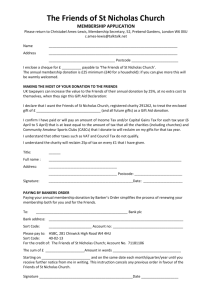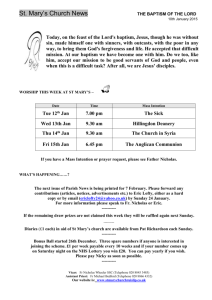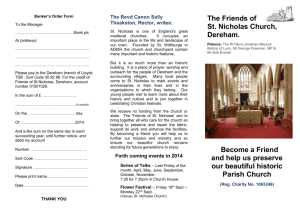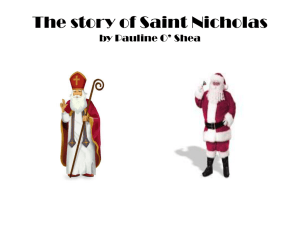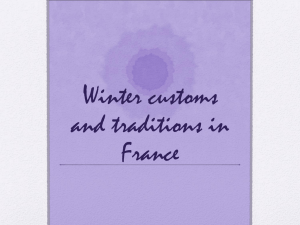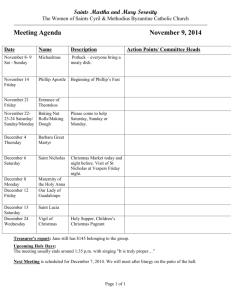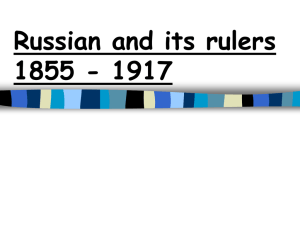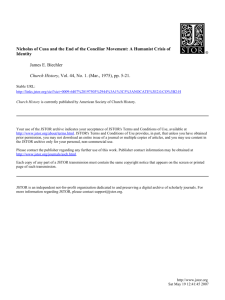History of Santa Claus
advertisement
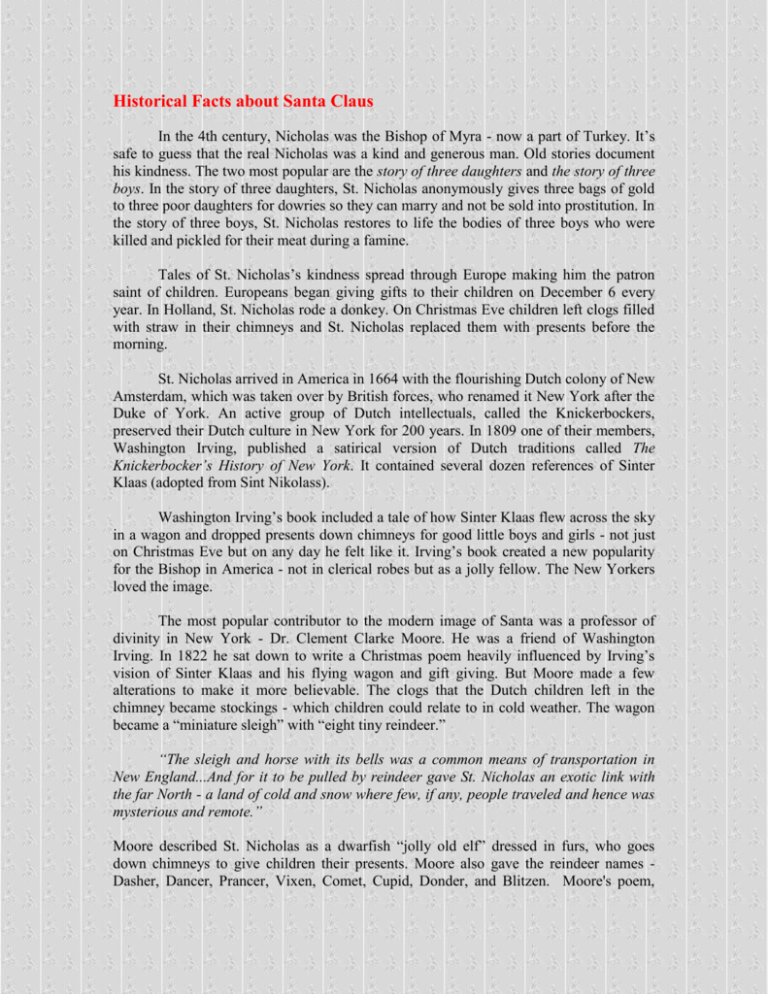
Historical Facts about Santa Claus In the 4th century, Nicholas was the Bishop of Myra - now a part of Turkey. It’s safe to guess that the real Nicholas was a kind and generous man. Old stories document his kindness. The two most popular are the story of three daughters and the story of three boys. In the story of three daughters, St. Nicholas anonymously gives three bags of gold to three poor daughters for dowries so they can marry and not be sold into prostitution. In the story of three boys, St. Nicholas restores to life the bodies of three boys who were killed and pickled for their meat during a famine. Tales of St. Nicholas’s kindness spread through Europe making him the patron saint of children. Europeans began giving gifts to their children on December 6 every year. In Holland, St. Nicholas rode a donkey. On Christmas Eve children left clogs filled with straw in their chimneys and St. Nicholas replaced them with presents before the morning. St. Nicholas arrived in America in 1664 with the flourishing Dutch colony of New Amsterdam, which was taken over by British forces, who renamed it New York after the Duke of York. An active group of Dutch intellectuals, called the Knickerbockers, preserved their Dutch culture in New York for 200 years. In 1809 one of their members, Washington Irving, published a satirical version of Dutch traditions called The Knickerbocker’s History of New York. It contained several dozen references of Sinter Klaas (adopted from Sint Nikolass). Washington Irving’s book included a tale of how Sinter Klaas flew across the sky in a wagon and dropped presents down chimneys for good little boys and girls - not just on Christmas Eve but on any day he felt like it. Irving’s book created a new popularity for the Bishop in America - not in clerical robes but as a jolly fellow. The New Yorkers loved the image. The most popular contributor to the modern image of Santa was a professor of divinity in New York - Dr. Clement Clarke Moore. He was a friend of Washington Irving. In 1822 he sat down to write a Christmas poem heavily influenced by Irving’s vision of Sinter Klaas and his flying wagon and gift giving. But Moore made a few alterations to make it more believable. The clogs that the Dutch children left in the chimney became stockings - which children could relate to in cold weather. The wagon became a “miniature sleigh” with “eight tiny reindeer.” “The sleigh and horse with its bells was a common means of transportation in New England...And for it to be pulled by reindeer gave St. Nicholas an exotic link with the far North - a land of cold and snow where few, if any, people traveled and hence was mysterious and remote.” Moore described St. Nicholas as a dwarfish “jolly old elf” dressed in furs, who goes down chimneys to give children their presents. Moore also gave the reindeer names Dasher, Dancer, Prancer, Vixen, Comet, Cupid, Donder, and Blitzen. Moore's poem, called A visit from St. Nicholas was published anonymously in the Troy, New York Sentinel on December 23, 1823. Moore published it anonymously to protect his reputation from the disapproving church community. The poem eventually became known as The Night Before Christmas. In the mid - 1800s St. Nicholas was drawn in a Bishop’s robe and pointed hat, a long coat and straight beard. Some had him with black hair. This changed in 1863 when Harper’s Weekly hired 21 year old Thomas Nast to draw St. Nicholas. He drew him as a jolly, roly-poly old man who wore a star-spangled jacket, striped pants, and a cap. This boosted the spirit of the civil war soldiers, and the magazine stuck with the image for 40 years. Over this period, Nast added features to St. Nicholas. One year he showed him pouring over a list of naughty and nice children; another year showed him in a toy shop at the North Pole. In 1931, the Coca-Cola company hired artist Haddon Sundblom to create artwork for a massive Christmas advertising campaign. Their soda was primarily a summer drink and Coca-Cola wanted to promote its winter sales. Sundblom dropped St. Nicholas’s black and white suit in favor of one in Coca-Cola red and white. The image stuck. In 1939 Montgomery Ward hired ad man Robert May to write a Christmas poem for their department store. It was called Rollo and the Red-Nosed Reindeer. The company didn't like the name Rollo and they changed it to Rudolph. Later the poem was recorded by singing cowboy Gene Autry. The rest is history. The End
